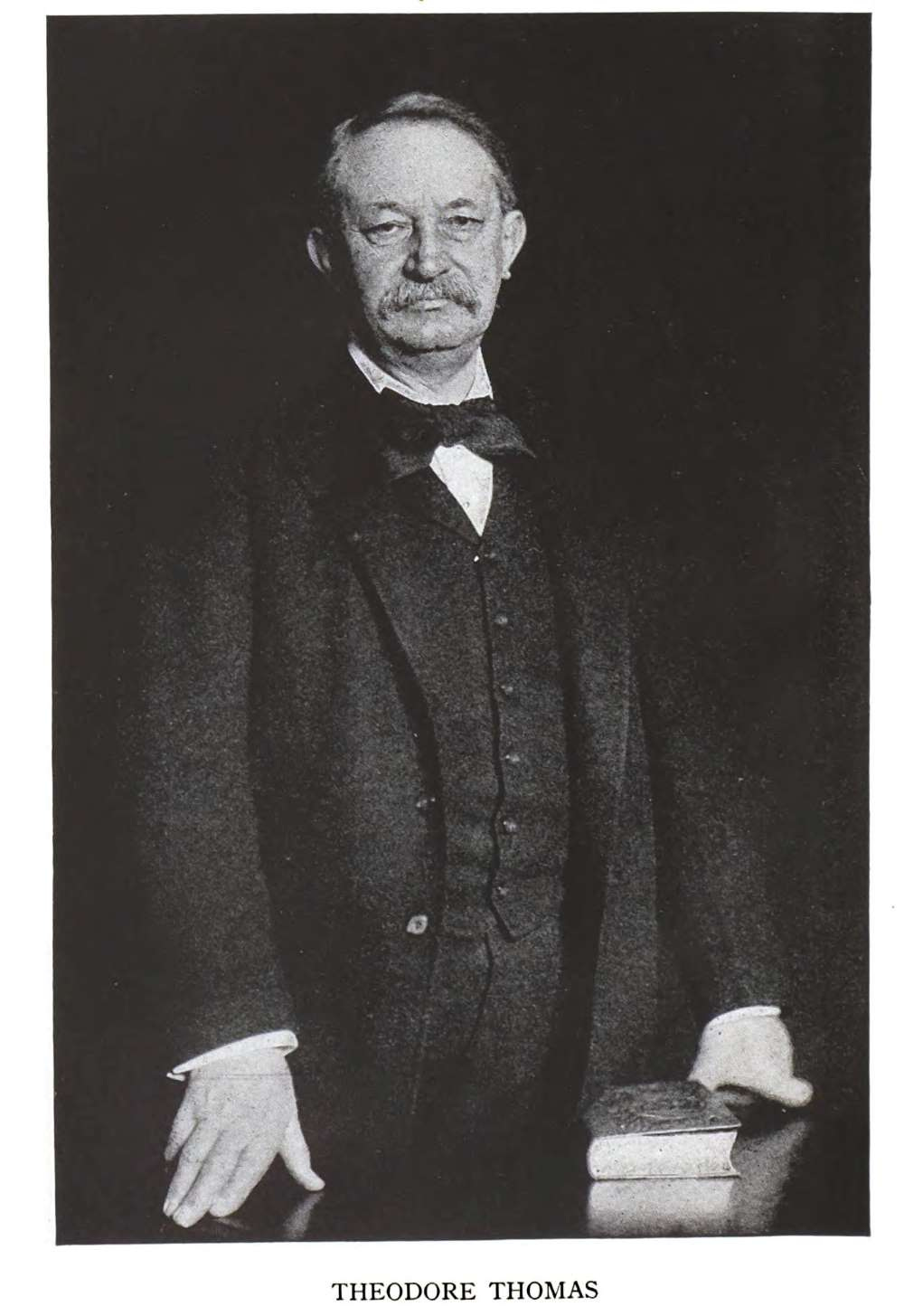Author note: on Thursday I’ll be speaking about Living Landmarks of Chicago at the Mensa Annual Gathering! Get the book that inspired my invitation to speak.
Theodore Thomas was a child prodigy who toured the country at the age of 15. His family had emigrated to New York City in 1845 when he was 10. The young violinist quickly became a member of several pit orchestras.
At the ripe old age of fifteen, he set off on his own, touring the country on horseback and setting up concerts which he arranged completely, from venue to publicity to ticket sales to performance. He realized he needed an education and returned to New York, where he studied conducting. At nineteen he joined the first violin section of the New York Philharmonic Society.
It wasn’t long before he began touring the country with his own orchestra, making his first appearance in Chicago in 1869.
Once was not enough, not for the Theodore Thomas Orchestra and definitely not for Chicago. So he came back. But he’d always return to New York.
Until he met a man named Charles Norman Fay. They became friends, and by 1889, Theodore was tired.
He was tired of traveling. He was tired of playing in scratch orchestras. His wife, Minna, was dying. He complained that New York City couldn’t support his orchestra so he had to disband it, and he couldn’t find any patrons. New York treated him as a “music merchant, a commercial proposition, subject to the laws of supply and demand.”
Charles asked him to come to Chicago. "I would go to hell if they gave me a permanent orchestra," Theodore said.
Hell, with caveats. Theodore listed his requirements, and the successful Chicago businessman agreed to every one. These included Theodore’s absolute control over his orchestra and the freedom to create programs without regard to box office receipts. There were more. And more. And more. All designed to ensure artistic freedom as well as financial support for his musicians.
When Charles returned to Chicago and presented the proposal to his colleagues, he found immediate support, and the first concerts of the Chicago Orchestra took place in October 1891, filling the acoustically perfect Auditorium Theatre.
Theodore’s next fight centered around getting his very own building, which you can read about here.
Read more about the Sullivan Center and the irascible genius it’s named for.
Later this week we’ll hear about the woman who saved vaudeville.
Don’t want to wait? Get all of these tantalizing tales in Living Landmarks of Chicago, or upgrade your subscription to get a new story, with audio, delivered to your inbox each week.





